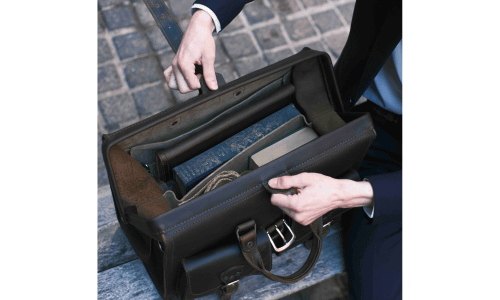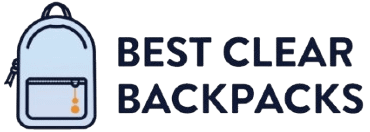A briefcase is a flat, rectangular container used for carrying documents. It typically features a handle and often includes locks for security.
Carrying important documents requires a reliable solution, and a briefcase has been the traditional choice for professionals worldwide. Designed for practicality, briefcases are made from various materials such as leather, metal, or durable fabrics, each offering a different level of style and protection.
They come in several sizes and styles, catering to diverse preferences and needs. A key aspect of a briefcase is its organizational potential, with compartments and pockets that help keep contents sorted and easily accessible. This accessory not only aids in transporting paperwork but also enhances the user’s professionalism with its classic, sophisticated appearance. As work culture evolves, briefcases have also adapted, with modern features like padded laptop compartments and adjustable straps for comfort. Whether for daily commutes or business travel, a well-chosen briefcase is an indispensable tool for keeping important items secure and organized.
Contents
History of The Briefcase
The briefcase is a symbol of professionalism and business. History of the Briefcase begins in the 14th century. It was a way to carry valuables and documents. Over time, it has changed a lot. It tells a story of work, style, and personal status. Let’s dive into the evolution of briefcases and see who carried them in the past.
Evolution of Briefcases
The briefcase has a rich history, starting as a simple pouch. It was for carrying money and small goods. Later, it became a symbol of a working professional. Here is how it changed:
- 14th Century: People used pouches made of cloth or leather.
- 17th Century: The ‘budget’ – a bag with a handle – came into use.
- 19th Century: A sturdier ‘dispatch case’ was designed for carrying papers.
- 20th Century: The modern briefcase was born, with a classic rectangular shape.
Materials changed too, from leather to metals and modern synthetics. The design shifted for comfort and security. Today’s briefcases have locks, padded compartments, and are even digital-friendly.
Famous Historical Users of Briefcases
Many important people in history carried briefcases. They used them for different reasons. Here’s a list of some famous users:
| Name | Time Period | Importance |
|---|---|---|
| Winston Churchill | 20th Century | Carried state documents during WWII. |
| Queen Elizabeth II | 20th Century | Has a custom-made briefcase for state papers. |
| James Bond | Fictional | Used gadget-filled briefcases in spy films. |
These briefcases were not just bags. They were tools for work, symbols of power, and part of personal style. Each one tells a story about its owner and their time.
Types of Briefcases
The briefcase is a professional’s companion, carrying important items with ease. Different styles suit various needs and tastes. Let’s explore the common types and their unique features.
Attache Case
An Attache Case is a classic choice for business professionals. It is usually made of leather or metal and snaps shut with a locking mechanism. This case is perfect for organizing documents and typically has a rigid frame. Below are some key points about Attache Cases:
- Locking mechanism ensures security.
- Leather or metal exterior offers durability and style.
- Internal pockets keep items organized.
- Often used by diplomats and lawyers.
Portfolio Case
A Portfolio Case is sleek and slim, perfect for those who prefer a minimalist look. It doesn’t have a handle and is meant to be carried under the arm. It’s great for light paperwork and laptops. Some benefits of Portfolio Cases include:
| Feature | Description |
|---|---|
| Material | Often leather, offering a sophisticated look. |
| Design | Slim and open, easy to carry. |
| Use | Best for light items like documents and small laptops. |
| User | Ideal for creatives and entrepreneurs. |
Messenger Bag Briefcase
The Messenger Bag Briefcase is trendy and functional. It comes with a long strap, worn over the shoulder or cross-body. This type of bag is versatile and often has multiple pockets. Here’s why it might be the right choice:
- Perfect for casual business settings.
- Strap makes it easy to carry.
- Multiple compartments for organization.
- Can fit larger items like books and laptops.
Choosing The Right Briefcase
Selecting the perfect briefcase is crucial for professionals. It’s not just a bag; it’s a mobile office, a piece of style, and a statement. A good briefcase carries your essentials and complements your daily routine. Let’s explore how to find the ideal match for your needs.
Consider Your Needs
Before buying, think about what you’ll carry. Your briefcase must fit your items comfortably. Here are key points:
- Size is key: Ensure it fits your laptop, documents, and gadgets.
- Weight matters: A lighter case eases your commute.
- Compartments help: Organize with multiple sections.
- Frequency of use: Daily users need sturdier options.
Consider these points to pick a briefcase that serves you well. It should align with your work life and personal style.
Material and Durability
The material of your briefcase affects its look and lifespan. Let’s compare common materials:
| Material | Pros | Cons |
|---|---|---|
| Leather | Elegant, ages well | Needs care, can be heavy |
| Nylon | Light, durable | Less formal |
| Canvas | Casual, versatile | May lack structure |
Choose a material that reflects your style and meets your durability needs. Quality materials last longer and often look better with age.
Design and Style
Your briefcase says a lot about you. Pick a design that fits your professional image. Consider these elements:
- Color: Classic black or brown suits most settings.
- Hardware: Metal accents add a sophisticated touch.
- Straps: Decide between a hand-carry or shoulder strap.
- Locks: For security, choose one with a reliable lock.
Remember, the right design combines functionality with aesthetics. It should make your life easier and complement your style.
Proper Use and Maintenance of A Briefcase
A briefcase is more than just a bag for your items. It’s a professional’s tool. It shows style and organization. Taking care of it is key for a lasting good look. This guide will help you pack and maintain your briefcase properly.
How To Pack Your Briefcase

Packing a briefcase is an art. You want to keep it tidy and organized. Start with the most important items. Place your laptop or tablet in a padded compartment. Use smaller pockets for pens, business cards, and chargers. Here’s how to do it right:
- Keep documents flat to avoid wrinkles.
- Use dividers for different subjects or projects.
- Place heavier items at the bottom to balance the weight.
Remember, an overstuffed briefcase can damage the bag and its contents. Plan and pack smartly. Use a folder system for papers. This keeps them neat and easy to find. Always leave a little space for unexpected items.
Cleaning and Maintenance Tips
A well-kept briefcase lasts longer and looks better. Use a soft cloth for daily dusting. For leather, a conditioner is essential every few months. It keeps the material soft and prevents cracks. Follow these steps for a clean briefcase:
- Empty the bag completely before cleaning.
- Use specific cleaners for the material of your briefcase.
- Avoid water on leather. It can leave stains.
For spills inside, a damp cloth can do wonders. Be gentle with zippers and clasps. They can break if forced. Store your briefcase in a cool, dry place. Sunlight can fade the color. A dust bag is great for long-term storage.
Frequently Asked Questions
Does Anyone Carry A Briefcase Anymore?
Yes, some professionals still use briefcases, but they are less common as people often prefer backpacks or messenger bags for their convenience and modern style.
What Has Replaced The Briefcase?
Backpacks and messenger bags have largely replaced the traditional briefcase for everyday carry and professional use.
Do Briefcases Still Exist?
Yes, briefcases still exist. They remain popular among professionals for their classic style and functionality. Many modern designs incorporate contemporary features like laptop compartments.
Conclusion
Selecting the right briefcase is more than a fashion choice; it’s a professional statement. With the vast array of styles, materials, and features available, your decision can enhance both functionality and style in your daily routine. Remember, a well-chosen briefcase not only carries your essentials but also carries your confidence into every business encounter.
Choose wisely, and let your briefcase speak volumes about your professional ethos.
